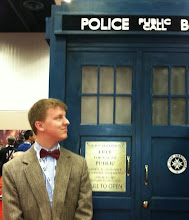
On the eve of the First World War, there is a small German village where mysterious acts are occurring. A carefully placed tripwire hurt the doctor and his horse; people keep dying; buildings are burned. There is an attempt to discover who committed these crimes, but they are not aggressive with their search. Instead there is uneasiness and fear. Through fear comes punishment. The punishment is always from the imperfect adults towards their children.
The audience of this film almost becomes victims themselves. We know what that generation will grow up to become. Despite this being a period piece, it plays off like a more detailed parable that still applies today. The schoolmaster is telling this story through narration and (one can assume) personal bias. While these terrible acts are going on, this is also the story about how he met and fell in love with his fiancée.
The story is told through beautiful black and white cinematography. Few filmmakers have really gone back to this potential. A film without color shouldn’t divide an audience no more than a photograph should. It is simply an artistic decision. Haneke has spoken that he has used this technique to subliminally distance the viewer from the story. I don’t know how much he succeeded since he still inspired emotion from me.

The style of this film also reminded me of Ingmar Bergman’s canon. Both sets deal with morality through occasionally cruel actions. I felt a strong comparison to Bergman in my two favorite scenes in the movie. There is a scene when a young boy is walking atop the railing of a high bridge. The schoolmaster stops him and asks why this happened. The boy replies by saying he was testing God. If he fell, he knew God was angry with him. This was a profound scene to me because through the eyes of the child if there is no punishment then the actions must be just.
The other scene revolves around a girl teaching her younger brother about death. Such a complex topic is being handled very adequately. She never patronizes him and there lies the major point of the movie. The children are our next generation. The way we treat them will become the way they will run things. The White Ribbon is a film that asks us to examine our own responsibility and our own ethical code. It is not an easy film at times, but it is an important one.
http://blog.movieset.com/movie-reviews/ticket-stubs-the-white-ribbon


The black and white is interesting also for representing the simple way many of the characters see the world---black and white, right and wrong.
ReplyDeleteHaneke is a true auteur. You know you're watching a Haneke movie from the style of the opening credits alone: Long, eerie silence with tiny credits presented against a pitch black background. You could feel the audience's anxiety during that sequence.
Having said that, I actually think this is the easiest film of his to watch. There are many moments of levity and tender poignance.